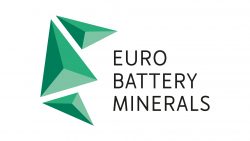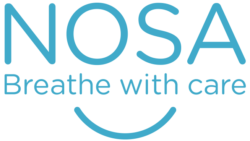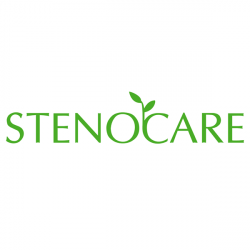2024-04-05

CEO Juho Himberg
"We are hopefully close to receiving an FDA clearance, which is in the final stage. We would be the first in the US to have FDA clearance for AI-powered handheld fundus cameras for diabetic retinopathy screening, which represents a vast market."
For those who have not heard of Optomed before, please tell us more about your business, what you do, and which markets you address?
Optomed is a medical technology company, manufacturing handheld fundus cameras for eye diseases screening. We are currently in the process of receiving FDA approval for the world’s first fully integrated AI handheld fundus camera for diabetic retinopathy screening, the Aurora AEYE camera. Currently, diabetic retinopathy is the biggest cause for blindness in the working age population. We have two divisions: devices and software. The device division is focused on camera technology, and the software division is focused on software solutions for the healthcare sector. We currently cover 60 countries with our solutions and will focus heavily on the US market after we hopefully receive FDA clearance in the short term.
Can you tell us more about your handheld fundus camera, its advantages, and how the products compare to competitors with similar solutions? Can you also elaborate a little bit about the software segment?
First off, the picture quality of our handheld fundus cameras is like tabletop cameras. There are often considerations that handheld cameras have inferior quality compared to tabletop cameras, but what we have managed to do with the Aurora camera and previous versions is that we have brought optics into the miniature scale, which allows the picture quality to be on the level of bigger instruments. For the software division, everything today is going through the internet, so we offer a great workflow for eye doctors when using our screening programs. The other part of the software segment is focused on radiology imaging and the PACS-systems. As of today, eye doctors have both tabletop cameras and handheld cameras. The handheld cameras are more flexible and can be used when a patient cannot move, for infants, when making a home visit or in emergency care. In these instances, you need a handheld fundus camera, and is more useful in the primary healthcare, where they screen for diabetic retinopathy. Furthermore, diabetes is like an epidemic in all part of the world, meaning there is a high need for screening tools for diabetic retinopathy everywhere.
How do you see the healthcare sector in regard to trying new solutions? And would you say that your products are well established in your current operating markets?
The healthcare sector is a sticky business, and the more technical the solution is, the more training is needed, which means the healthcare sector often sticks with the same supplier. Furthermore, after a potential FDA clearance for our AI-integrated fundus camera, the screening for diabetic retinopathy will be brought into primary healthcare. Today, ophthalmologists do the screening, but there are not enough eye doctors. However, with our camera, a nurse or any healthcare professional will be able to do the screening. Additionally, the result will be declared immediately, whereas results had to be checked manually in the past. The market wants this in the US because there is already reimbursement and a CPT code for this screening. Additionally, insurance companies are paying for the screening, and they give a HEDIS score, and if you don’t complete these screenings, your score goes down, meaning that you must pay more for your healthcare.
Your revenue growth has been flat since 2019; what is your strategy for growth in the coming years?
We have been in the process of FDA clearance for a couple of years, and our strategy going forward goes hand in hand with a clearance. Currently, handheld cameras are sold to eye doctors, but we are bringing them to primary healthcare, an entirely different market. Primary care is not interested in tabletop cameras because they are more expensive and larger than handheld cameras. Furthermore, we will not sell the cameras, but we will charge a monthly subscription fee to use them, which entails recurring revenue for us. The healthcare professionals will have an unlimited amount of analysis, meaning there is an incentive as they will not pay per analysis but monthly for unlimited usage.
Can you tell us more about the pending FDA clearance for the Aurora AEYE camera and what opportunities you see with a possible clearance?
After the New Year’s, additional data regarding Aurora-AEYE AI fundus camera has been submitted to the FDA. We have done everything we can and are now awaiting a resolution from the FDA, where we are hopefully in the final stage. The resolution can be positive or negative.
Where do you see Optomed in three years?
First, we need to get into the black figures. The top line number is difficult to estimate, but we would break even within three years with an FDA clearance. The US spends about 30 – 40% of the world’s healthcare spending, meaning there is a huge growth opportunity. The technology that we bring to the primary healthcare is a completely new market, which today, does not exist yet. China is also interesting since they are AI-friendly in the healthcare sector. However, there is a political risk in China, which is why it does not have the same priority as the US going forward. The US case and the opportunity are so much bigger than other markets, and we want to execute it properly. We already have operations and a sales force in the US and are ready after the very first day after clearance.
Could you give three reasons as to why Optomed is a good investment today?
- We are hopefully close to receiving an FDA clearance, which is in the final stage. We would be the first in the US to have FDA clearance for AI-powered handheld fundus cameras for diabetic retinopathy screening, which represents a vast market.
- Many other medical device companies only start to work for reimbursement after FDA approval, but we are already having reimbursement for diabetic retinopathy, which is truly valuable.
- The third reason is that there is pressure from insurance companies and healthcare institutions to bring in new AI technology to the healthcare sector, which are the ones who finance the healthcare system and putting a lot of pressure on this. We are coming from the demand and have an answer to it.





